Alex Constantine - November 14, 2010
A preamble from Philip Agee's obituary, New York Times, January 10, 2008:
" ... Despite its political viewpoint, 'CIA Diary' is considered by some agency veterans to offer an accurate account of the work of a case officer. In a talk at Harvard last year, Michael Sulick, now head of the C.I.A.’s clandestine service, recommended Mr. Agee’s book as 'an excellent reflection of the day-to-day life of an officer, until he starts going bad, and then of course it’s totally untrue.' ... ”
http://www.nytimes.com/2008/01/10/obituaries/10agee.html
" Agee died in Havana in January, 2008, at the age of 72. Now, his papers have been given to the Tamiment Library at New York University and will be open for public examination next April. ... While Agee’s life and career represent a small entry in the history of the Cold War, there are many parties interested in what these papers may contain. ... I never met Agee in person, but I learned a great deal while writing a story about him that was mysteriously buried by my editors. ... "
By Murray Seeger
Washington Decoded | November 11, 2010
 Philip Agee, the most notorious defector from the covert service of the Central Intelligence Agency, is coming home after living without a country for three decades. Agee died in Havana in January, 2008, at the age of 72. Now, his papers have been given to the Tamiment Library at New York University and will be open for public examination next April.
Philip Agee, the most notorious defector from the covert service of the Central Intelligence Agency, is coming home after living without a country for three decades. Agee died in Havana in January, 2008, at the age of 72. Now, his papers have been given to the Tamiment Library at New York University and will be open for public examination next April.
The library announced that the 20-linear-foot collection was donated by his widow, Giselle Roberge Agee, a German national and former ballet dancer. “We have an international reputation as a repository documenting the history of left politics and the movement for progressive social change,” Michael Nash, the associate curator, said.[1]
Included in the papers, according to the press release, are “legal records, correspondence with left-wing activists, mainly in Latin America, and others opposed to CIA practices and covert operations; papers relating to his life as an exile living and working in Cuba, Western and Eastern Europe; lecture notes, photographs and posters.”
While Agee’s life and career represent a small entry in the history of the Cold War, there are many parties interested in what these papers may contain. The first question will be, did Agee purge his files of the most damaging evidence of his perfidy as a secret agent? He took pride in revealing the identities of thousands of his former colleagues and their contacts in foreign countries with assistance of the Cuban and Soviet intelligence services.
Perhaps these papers contain information that will encourage the CIA to open its files about Agee’s undercover work and his activities after he left the agency in 1969. And, perhaps, the agency will produce evidence documenting one of the most damaging accusations against Agee: that he exposed a circuit of Polish Army officers who were supplying information to the West.
I have both personal and professional interests in these secrets because Agee was at the center of the strangest incident in my career as a foreign correspondent for the Los Angeles Times. I never met Agee in person, but I learned a great deal while writing a story about him that was mysteriously buried by my editors.
In the winter of 1974, after nearly three years in Moscow, I was in Washington with my family waiting for a new overseas assignment. The city was awash with stories about scandals within the CIA. A revelatory book, The CIA and the Cult of Intelligence, co-authored by a former officer named Victor Marchetti, had just been published after strenuous efforts by the agency to suppress it.
I was asked to write a story about the CIA, its troubles and attempts to reform under a new director, William Colby, a career officer. In a rare, on-the-record interview, Colby discussed the many critical reports and the changes he hoped to bring about. When I asked about Philip Agee, who had left the agency in 1969, Colby described him as a “strange case.” Agee was living in London where he had just published a book, Inside the Company: CIA Diary. It described his career with the CIA in great detail and included a 22-page list of nearly 250 agency officers, operatives, and informants. Agee had joined a group of communists and other leftists determined to undermine the worldwide work of the agency. (His book was eventually published in the United States in July 1975).
Colby, on background, said that Agee had gone to the Soviet Union embassy in Mexico City in 1973, seeking to make contact with KGB officers but was turned away as a likely CIA plant. He had better luck, though, at the Cuban mission. Agee then went to Havana and met with Cuban intelligence agents who worked closely with the KGB. The Russians trained Cuban agents—I had seen the dormitory where Cuban trainees lived in Moscow.
The assumption was that the communists gave Agee some of the material he used in his book. Colby said that Agee would be subject to prosecution if he returned to the states. The LAT printed a story from my reporting in November 1974 while I kept some of the Agee material for possible future use.[2]
In the spring of 1975, I arrived in Bonn to take an assignment covering Germany and the Eastern Bloc of communist countries. Meantime, the CIA had issued new orders that its officers were to sever contacts with American correspondents, but I was granted an exception to meet with an officer who was following the development of Eurocommunism, the amorphous movement of Italian and French communists seeking to enhance their popular standing by taking positions independent of the Comintern in Moscow.
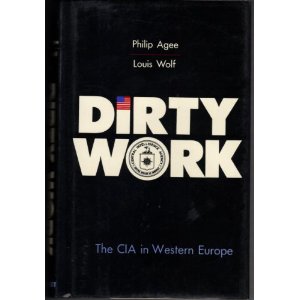 I saw an item in Pravda that a Western spy had been executed, and in June 1975, a story from Warsaw that a Polish lieutenant colonel, Jerzy Pawlowski, had been arrested for “activities against the basic interests of the Polish state.”[3] I asked my new CIA contact about these cases and he responded quickly, and sharply, that Agee was responsible for “rolling up” the Polish spy ring.
I saw an item in Pravda that a Western spy had been executed, and in June 1975, a story from Warsaw that a Polish lieutenant colonel, Jerzy Pawlowski, had been arrested for “activities against the basic interests of the Polish state.”[3] I asked my new CIA contact about these cases and he responded quickly, and sharply, that Agee was responsible for “rolling up” the Polish spy ring.
“You will have to prove it yourself,” he said, but the clues were Mexico City and the Olympic Games of 1968.
In his book, Agee had disclosed that his last assignment for the CIA was as special assistant to the US ambassador for the period of the Olympics. He mentioned knowing about a man of Polish extraction code-named BESABER; he was a CIA agent who operated a souvenir store that was frequented by Poles. Agee did not name Pawlowski, who won an Olympic gold medal in saber fencing, nor did he say the store was a drop point for Polish spies. My assumption, however, was that this kernel of information about BESABER provided the first vital clue in the investigation that had culminated in Pawlowski’s arrest.[4]
My agency source confirmed my conclusions and I filed a story on January 12, 1976, under a Brussels dateline to divert attention from my German-based source:
Philip Agee, a former CIA agent active in exposing his former co-workers, was responsible for the “rolling up” of a western intelligence group operating in Poland.
According to qualified western sources, Agee gave Soviet KGB agents the name of a key agent [BESABER] which enabled the Polish government last summer to arrest 120 persons and apparently break a spy ring which had been reporting to French intelligence . . . [5]
My copy moved to a Paris center that transmitted copy to the LAT and Washington Post and to our jointly-operated news service. As a professional courtesy, the copy was “dropped” to The Guardian, then located in Manchester, many hours before it arrived in Los Angeles.
My editors said they were holding my copy 24 hours, apparently to contact CIA headquarters. The agency, officially, had “no comment,” but something was said because the story was never printed and I was never told why. Meantime, in a twisted editorial judgment, a Guardian reporter took my copy to a meeting of the Socialist Forum in London where Agee was to speak on the subject of the “CIA and World Politics.”
On January 14, 1976, The Guardian reported the following (butchering my story in the process):
Philip Agee, the disaffected CIA agent who has been active in exposing former colleagues, last night denied a newspaper report that he had been responsible for breaking up a Western spy-ring working in Poland.
The report, in today’s Los Angeles Times, said to come from “qualified sources” in Brussels, claimed that Mr. Agee had given the name of a key agent to Soviet intelligence (KGB), which enabled the Polish government to arrest 120 people last summer. The agent was named as Jerzy Pawlowski, an Olympic fencing gold medalist and Polish Army officer who was said to have met Mr. Agee in Mexico City.[6]
Agee was quoted as saying “I do not know anyone by the name of Pawlowski. Nor do I know any Eastern European working in his own country for the CIA. This is obviously an attempt to pin something on me.” While those first two sentences were true, insofar as I knew, Agee was nonetheless on the defensive because he was already being blamed for allegedly helping to expose Richard S. Welch, the CIA station chief in Greece. Welch had been assassinated just weeks before by a left-wing group known as the “Revolutionary Organization of November 17.”[7]
The Guardian printed the CIA’s “no comment” on the Agee story and wrapped it up with strands of other reports about spies being exposed by various news agencies. I was taken aback by the Guardia ’s approach to the story. The paper had printed many of my stories without that kind of manipulation and I had often met its correspondents treading my reportorial turf.
When a Guardian reporter called me after its first Agee story was printed, I assumed we would were conversing on a colleague-to-colleague basis. I told him he had failed to ask Agee crucial questions. I was surprised to see myself quoted as a news source.[8]
I am convinced that Bill Thomas, the LAT editor, had issued a “kill” order on my story after talking to CIA headquarters. I had known Bill a long time and liked him, but I also felt he was gutless. In 1974, he acceded to an agency request to hold his reporter’s story about the CIA effort to recover a sunken Soviet submarine from the Pacific Ocean until other newspapers discovered the story.
Earlier this year, I asked Thomas, now in retirement, if he remembered talking to the agency about my story, and he answered he did not remember the Agee story and had no access to his office records. Bob Gibson, the foreign editor, never responded to my e-mail questions.
In April 1976, London lawyers representing Agee filed notice with The Guardian, the LAT, and me, personally, asserting my story had received “world-wide publicity” and that the accusations it contained “could hardly be more serious.” We were asked to pay Agee for damages he had suffered; his legal fees; and to print a retraction of the story.[9]
I filed a long, detailed, and defensive memo to the LAT lawyers and waited for any follow-up requests from Agee. While I was sure Agee was “libel proof” under American law, I knew there was a serious risk for liability under British law. But a year passed with no more contacts with the London lawyers and eventually the LAT attorney said the issue was closed.
Agee was troubled enough by the story that in his book, On the Run, published in 1987, he asserted my article was part of a CIA propaganda scheme to destroy his reputation via fabrications reported by “cooperating journalists.” He also claimed to know that the foreign editor had killed my story “because it lacked confirmation.”[10] When Agee was expelled from Britain in 1977, he claimed part of the reason was the Pawlowski matter, although British authorities asserted he was responsible for the loss of two of their agents. Agee bounced from country to country until his marriage to Roberge qualified him for a German passport.
In January 1977, Newsday, the Long Island newspaper then owned by the LAT, printed a story, “Ex-Spy Accused of Betraying NATO Ring,” that read like a modestly re-written version of my story from the year before. More than 20 years later, the Mitrokhin archives revealed new details about the extent of the cooperation among Agee (code-named PONT), the KGB, and the DGI, Cuba’s counterpart to the Soviet service. And in his memoir, Oleg D. Kalugin, a former KGB major general who now lives in Washington, also confirmed that Agee supplied “invaluable information about CIA operations and agents worldwide” and became part of the Soviets ’ ceaseless efforts to discredit and disrupt the CIA.[11]
Agee died on an operating table in Havana where he was undergoing surgery for perforated ulcers. He operated a travel agency in Havana but spent much of his time in Hamburg. In 2003, long after I left the paper, the LAT published an op-ed article by Agee criticizing the Bush administration for exposing the identity of Valerie Plame, a CIA officer under non-official cover. Their action was “dirty politics” and different from his own unmasking of officers and agents. “We were right in exposing the CIA in the 1970s, because the agency was being used to impose a criminal US policy,” Agee wrote.[12]
When I interviewed William Colby in the fall of 1974, however, he told me that Agee had not left the CIA in early 1969 because of some ideological or moral conversion. His letter of resignation had been full of praise for the CIA, and expressed genuine regret that a crisis in his personal life had made it impossible for him to serve any longer. (Agee was involved in a bitter divorce and custody battle with his first wife, and she threatened to expose him in court proceedings as a CIA officer). But in Inside the Company, Agee represented himself as someone who harbored doubts about working for the CIA since 1965, and finally quit because he did not want to remain a “servant of . . . capitalism . . . one of its secret policemen. ”[13]
Perhaps his collected papers will fill in some of the many blanks in the Agee story, including the exact circumstances that led to his defection.
Murray Seeger, a Nieman Fellow at Harvard University in 1961, was a correspondent and bureau chief for the Los Angeles Times.
[1] “NYU’s Tamiment Library Acquires Former CIA Operative Philip Agee’s Papers,” NYU News Release, 25 October 2010; Jeff Stein, “ NYU Library Acquires the Papers of Philip Agee, Renegade Spy, ” Washington Post, 26 October 2010.
[2] Murray Seeger, “CIA Tells a Few Secrets in Bid to Polish Its Image,” Los Angeles Times, 18 November 1974.
[3] “A Top Fencer Reported Jailed By Warsaw as Spying Suspect,” New York Times, 15 August 1975.
[4] The passage identified BESABER as a Polish national, resident in Mexico City, “who is normally targeted against Polish intelligence officers and runs a ceramics business specializing in souvenirs.” Philip Agee, Inside the Company: CIA Diary (New York: Stonehill Publishing, 1975), 529.
[5] Murray Seeger, “Spy,” unpublished draft, 12 January 1976. There were also rumors that Pawlowski spied for the West Germans or NATO. But according to a well-regarded book on Colonel Ryszard Kuklinski, another Polish officer who spied for the West, Pawlowski was in direct contact with the CIA “for several years until 1973. ” Benjamin Weiser, A Secret Life: The Polish Officer, His Covert Mission, and the Price He Paid to Save His Country (New York: PublicAffairs, 2004), 125.
Pawlowski was spared the death penalty, but in April 1976 was sentenced to 25 years’ imprisonment and forfeiture of all his property. His served 10 years in jail before he was included in a spy swap, along with two dozen other Western spies, for four Eastern bloc agents. But typically, Pawlowski—who was known for his flamboyance and contempt for the Russians—refused to settle in the West, asserting that he was a patriot; an arrangement was made that allowed him to live out his life in Poland. He died in February 2005. “Jerzy Pawlowski, Polish Champion Fencer and Spy Arrested in the 1970s on Charges of Spying for the CIA,” The Times (London), 21 February 2005.
[6] David Pallister, “Ex-CIA Agent Denies Betrayal,” The Guardian, 14 January 1976.
[7] David Pallister and Walter Schwarz, Ex-CIA Agent Denies Betrayal,” The Guardian, 14 January 1976. The Winter 1974-75 issue of CounterSpy, a US periodical opposed to CIA activities, had contained an essay by Agee that advocated “identify[ing] and expos[ing] . . . the people who [are] instruments [of] and execute [the] CIA’s programs.” The same issue, with Agee's foreknowledge, contained a five-page listing of CIA chiefs of station around the world—including the identity of the station chief in Athens, Stacy B. Hulse. Richard Welch was listed as the station chief in Lima, Peru. The November 17 radical group began stalking Hulse, and then Welch once he arrived in July 1975 as Hulse’s replacement and moved into the same residence. In November, an English-language newspaper, the Athens News, and a Greek newspaper, Eleftherotypia, identified Welch as the current local CIA station chief; he was assassinated on December 23. Philip Agee, “Exposing the CIA,” and “Chiefs of Station: Who’s Who & What They Do,” CounterSpy, Winter 1975; Agee, On the Run, 134.
[8] David Pallister and Hella Pick, “Storm on CIA Touches Britain,” The Guardian, 15 January 1976.
[9] Letter, Miller & Co to Los Angeles Times, London Office, 9 April 1976.
[10] Agee, On the Run, 139-140.
[11] Ernest Volkman, “Ex-Spy Accused of Betraying NATO Ring,” Newsday, 14 January 1977; Christopher Andrew and Vasili Mitrokhin, The Sword and the Shield: The Mitrokhin Archive and the Secret History of the KGB (New York: Basic Books, 1999), 231-233; Oleg Kalugin, Spymaster: My 32 Years in Intelligence and Espionage Against the West (New York: Basic Books, 2009), 93, 219-220.
[12] Philip Agee, “The Laws of the Father Are Visited on the Son,” Los Angeles Times, 3 October 2003.
[13] Agee, Inside the Company, 438-439, 503-504, 558.
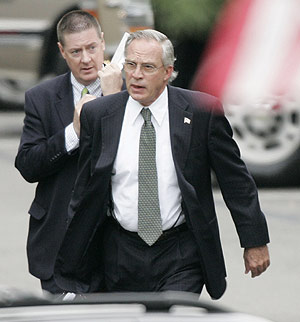
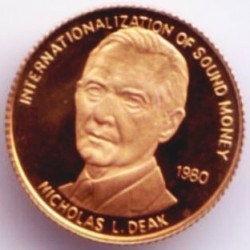
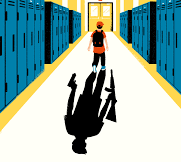
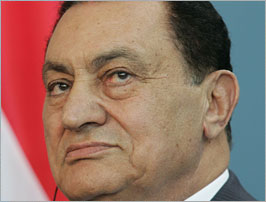
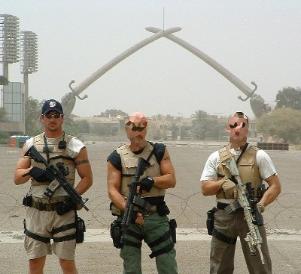


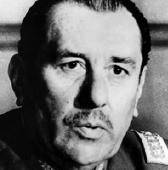
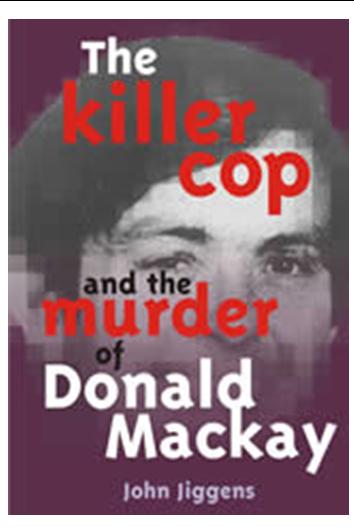
Also remember the expose’s of John Stockwell , a CIA africa commander who also quit and exposed in the middle 70’s. Hearing them both speak was a high point in my life.
Lyle Courtsal